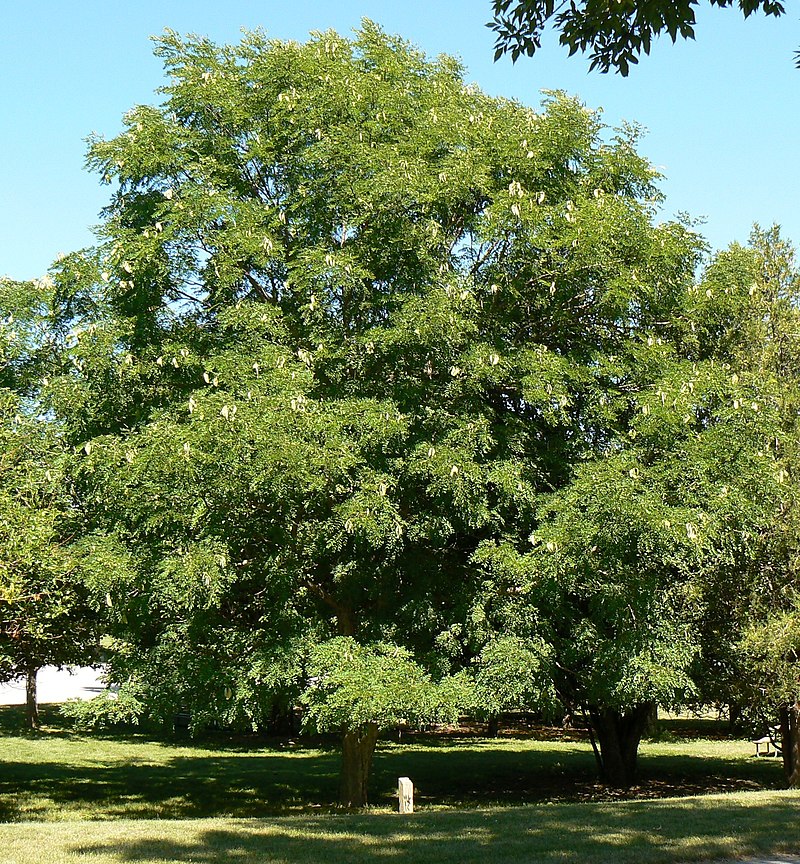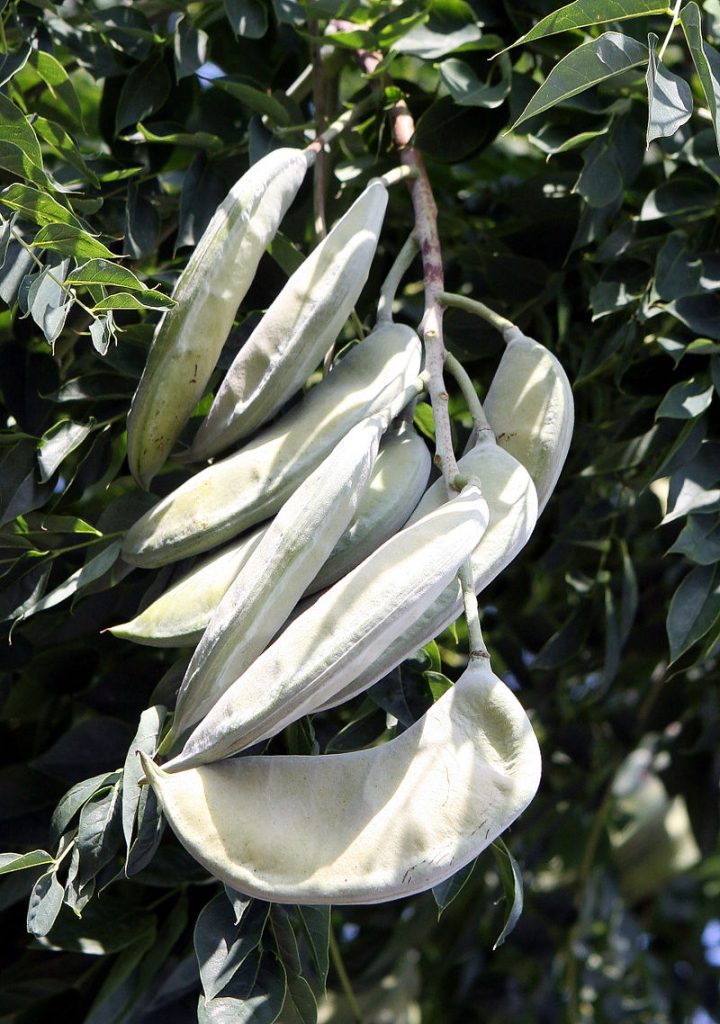
This tall deciduous tree earned its common name from the fact that early American settlers made a beverage from its roasted and ground seeds. Unroasted pods and seeds, however, are toxic. Kentucky Coffee tree is native to the rich moist woods of eastern and Midwestern United States but is planted across the country as an urban shade tree because of its tolerance to drought and pollution as well as its ability to adapt to a large range of soil conditions. It is not related to Coffea arabica, the popular coffee beverage, but is a member of the bean family, Fabaceae, that also includes peas, lupines, and mimosa. The trees grow up to 80′ tall and have several large branches that end in contorted, stout twigs. The bark is rough, scaly, gray-brown and may have irregular furrows and plates with curling sides. Leaves appear late in spring with a touch of pink and gradually turn blue-green in summer, then variable yellow in fall. Each bi-pinnately compound leaf is up to three feet long and two feet wide, bearing up to one hundred small leaflets. In mid to late spring, male trees bear flowers in panicles three to four inches long while female trees bear clusters of greenish white flowers in panicles eight to twelve inches long. The flowers on the female trees give way to brownish black seed pods five to ten inches long and containing several large seeds. The seedpods and large leaves can be considered a liability and male trees are preferred to female to reduce the litter. In spite of the litter problem, Kentucky Coffee tree is a handsome plant and desirable for a lawn and shade tree. It is especially attractive in winter when its branching habit creates a bold silhouette and its rough furrowed bark can be appreciated. The genus name, Gymnocladus, comes from Greek words γυμνός (gumnós) meaning naked, and κλάδος (kládos), meaning a branch, and refers to the branches that are bare many months of the winter. The specific epithet, dioica, comes from the Greek words dis meaning twice, and oikos meaning house, and refers to male and female reproductive structures being on different plants. PhotoCredit MONGO Wikipedia

Type: Deciduous tree
Outstanding Features: Drought and pollution tolerance; winter interest
Form: Oval
Growth Rate: Slow
Bloom: Mid to late spring
Size: 60-80’ H x 40-55’ W
Light: Full sun
Soil: Organically rich, moist, well-drained
Hardiness: Zones 3-8
Care: Prune in winter or early spring if desired; clean up litter in fall.
Pests and Diseases: None of significance
Propagation: Seed; root cuttings; easily transplanted in spring and fall.
Photo Credit: Hardyplants Wikipedia
